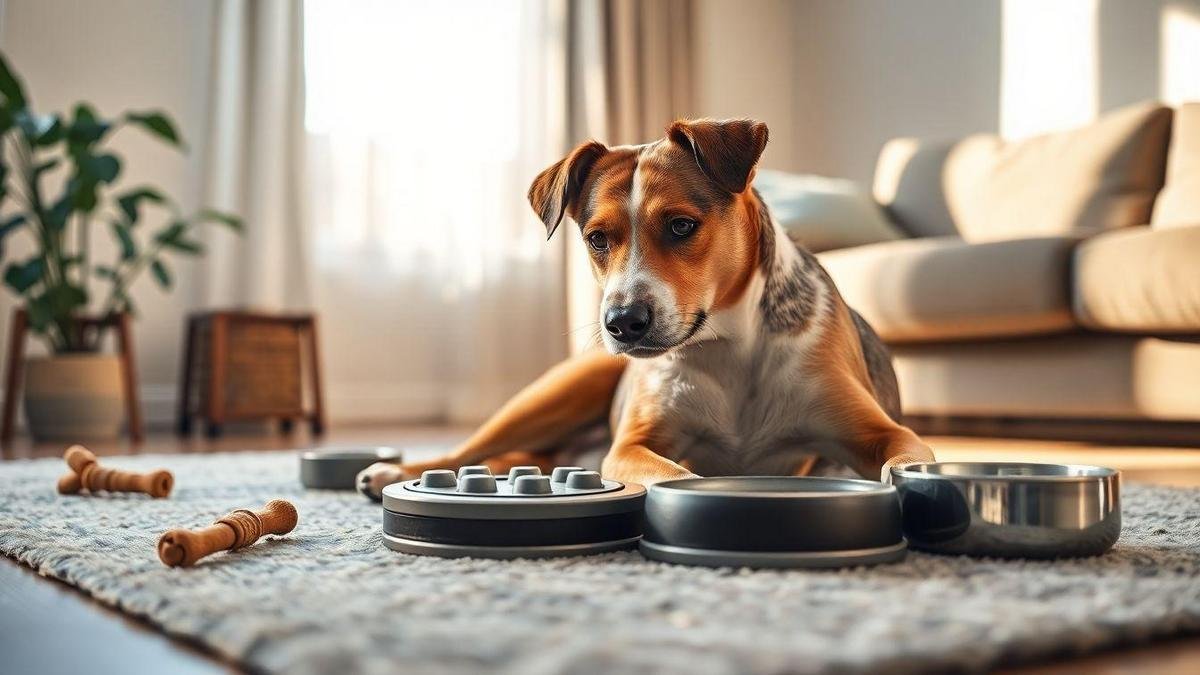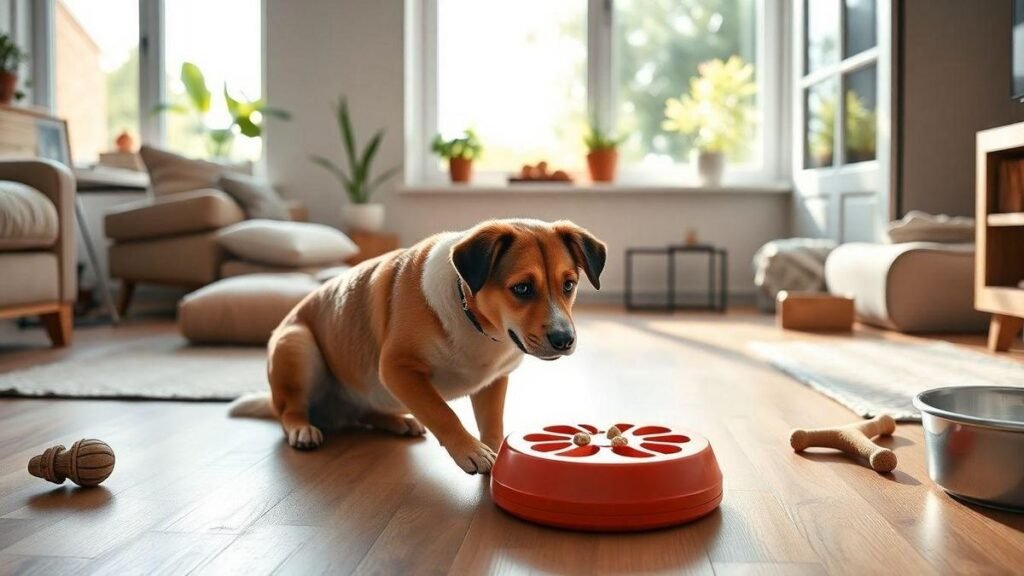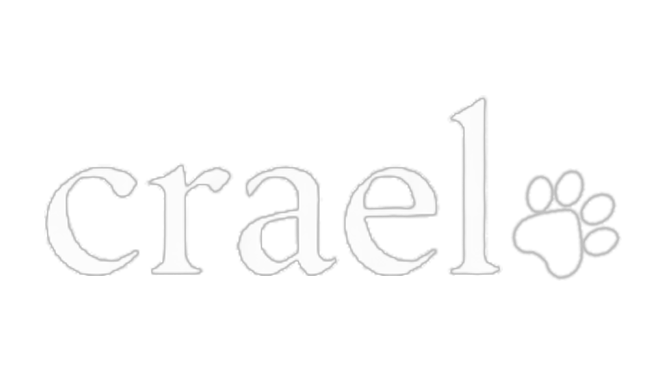Importância do enriquecimento ambiental para cães que ficam sozinhos em casa — Environmental enrichment for dogs left alone
I know it worries you when your dog spends time alone. In this guide I explain how enrichment reduces boredom and destructive behavior, supports physical health and mental well‑being, and helps ease separation anxiety. You’ll find safe unsupervised toy choices, tips to pick non‑toxic, durable chews, simple safety checks, and clear DIY scent and puzzle ideas. I also share calming options, routines, and ways to track progress so your dog feels safe and happy at home. For ideas on how to keep your pet engaged while you’re away, see practical tips on keeping pets entertained while you’re at work.
Key takeaways
- Offer chew toys and puzzle feeders to keep your dog busy — see recommendations for the best toys to keep pets mentally engaged.
- Rotate toys and activities to maintain novelty.
- Leave a comfy bed and familiar smells to calm your dog.
- Do a short play or training session before leaving to tire your dog — learn how to teach your dog to settle on command.
- Use soft music or a camera for peace of mind and connection.

Why enrichment matters: Importância do enriquecimento ambiental para cães que ficam sozinhos em casa
Importância do enriquecimento ambiental para cães que ficam sozinhos em casa is more than a phrase — it’s a practical plan. Enrichment gives dogs meaningful tasks that burn mental and physical energy, lowering the urge to chew, scratch, or vocalize when left alone.
How enrichment reduces boredom and destructive behavior
Enrichment gives dogs healthy outlets for energy and instincts:
- Food puzzles slow eating and keep the mind engaged.
- Chew toys provide a safe chewing option instead of furniture — compare durable options in interactive dog toys and durable chews.
- Scent games turn sniffing into purposeful play and burn mental energy — try methods from scent enrichment to calm indoor dogs.
Example: a stuffed, frozen Kong turned a couch-chewing problem into focused licking for 30–60 minutes. For step‑by‑step frozen Kong ideas, see guides on using a lick mat for relaxation and long-lasting treats like how to teach your dog to use a lick mat.
Health and well‑being benefits
Balanced enrichment supports both body and mind:
- Physical health: better weight, more movement, healthier joints.
- Mental well‑being: less anxiety, improved focus, quicker learning.
A quick mix—short fetch, a sniff game, then a nap—often equals a calmer dog for hours.
Benefits at a glance:
| Key benefit | Result |
|---|---|
| Behavior | Fewer bad habits at home |
| Body | More movement, improved weight |
| Mind | Happier, less stressed, more alert |
For low‑effort daily activities that keep dogs mentally stimulated, look at simple indoor mental stimulation ideas.
Safe enrichment for unsupervised time
I prioritize the Importância do enriquecimento ambiental para cães que ficam sozinhos em casa by choosing tools that are safe for unsupervised use.
Choose non‑toxic, durable toys and remove choking risks
Select toys made from natural rubber or tough nylon; avoid small parts and loose seams. Watch initial play sessions and replace toys showing holes or soft spots. For guidance on introducing new items safely, read how to introduce new toys and enrichment activities.
| Toy type | Material | Best for | Safety note |
|---|---|---|---|
| Treat-dispensing ball | Natural rubber | Light–moderate chewers | Check for cracks weekly |
| Heavy chew bone | Nylon | Strong chewers | Choose correct size |
| Plush (reinforced) | Polyester | Gentle chewers | Remove if stuffing visible |
| Rope toy | Cotton blend | Tug and fetch | Discard if threads pull out |
Always match toy size to your dog’s mouth to prevent choking.
Food puzzles and chews for unsupervised use
Use slow‑dispensing toys and long‑lasting chews rated for unsupervised time. Read manufacturer guidance and match complexity to your dog’s skill. For DIY options using items you already have, see DIY puzzle feeders.
Common options:
- Frozen Kong with plain yogurt or mashed banana: 30–90 minutes of engagement.
- Durable gnaw: long-lasting for heavy chewers (replace when worn).
- Slow-feeder bowls: slow mealtime and prevent gulping.
Avoid rawhide or collagen chews without vet advice; some dogs break and swallow pieces.
Daily safety checks and vet precautions
Do a quick safety check before leaving, and whenever introducing a new item:
- Inspect toys for holes, soft spots, or loose parts.
- Remove anything with strings, ribbons, or detachable pieces.
- Lock away batteries, cords, and household chemicals.
- Confirm chew size fits your dog’s mouth.
- Check ingredient labels for allergies.
- Supervise new items the first few times — see advice on preparing your pet for indoor alone time.
- Keep emergency and vet contacts handy.
| Check | How often | Why |
|---|---|---|
| Visual toy inspection | Daily | Catch damage early |
| Replace worn toy | As needed | Prevent swallowing fragments |
| Vet consult for chews | Once or as needed | Allergy/digestion advice |
| Supervised trial | First use | See reaction |
Cameras can help monitor behavior and spot issues quickly. For reducing problem barking and tracking events, see tips to prevent excessive barking.
Puzzle feeders and interactive toys
Using puzzle feeders and interactive toys changes a long, quiet day into a safe, engaging one — reinforcing the Importância do enriquecimento ambiental para cães que ficam sozinhos em casa.
Puzzle feeder types and how they slow eating
- Slow/maze bowls: raised ridges force dogs to eat around obstacles.
- Treat-dispensing balls: kibbles fall out as the ball rolls.
- Slide-and-flip puzzles: move pieces to reveal food.
- Snuffle mats: hide kibble in fabric folds for nose work — learn to make one with the DIY snuffle mat guide.
Why they work:
- They delay food access, increasing time per bite.
- They make dogs work for food, reducing arousal.
- They provide distraction, shifting focus to solving.
Start with easy feeders and increase challenge as your dog learns.
Interactive toys for mental stimulation
- Treat-dispensing puzzles: reward repeated effort.
- Automatic ball launchers: for fetch lovers (supervise first sessions) — see interactive options in interactive dog toys to fight obesity.
- Electronic interactive toys: move or chirp to invite play.
- Chew puzzles: combine tough chew with hidden treats.
Always check for loose parts and choose the right level of challenge. For activity ideas that fit a busy schedule, consult keeping your indoor dog active on a busy schedule.
| Age group | Good puzzle types | Key points |
|---|---|---|
| Puppy | Soft snuffle mats, easy dispensers | Soft materials; supervised |
| Adult | Treat balls, slide puzzles | Durability; correct complexity |
| Senior | Low-effort puzzles, scent games | Gentle on teeth; low physical demand |
Rotate toys weekly to keep novelty high. For daily structure that supports rotation, see how to build a daily routine for your indoor pet.
DIY enrichment ideas (simple, safe, low cost)
I use household items to create fast, effective enrichment that supports the Importância do enriquecimento ambiental para cães que ficam sozinhos em casa.
Quick projects:
- Hidden-treat cup: treats under plastic cups; dog taps to find snacks.
- Muffin tin puzzle: kibble in tin holes covered with tennis balls.
- Snuffle mat from towel: knot towel strips on a rubber mat to hide kibble — full instructions in the DIY snuffle mat tutorial.
- Scent boxes: hide scented cotton balls; train focus — methods in using scent enrichment.
- Frozen Kong: freeze yogurt or low-sodium broth in a Kong.
| Project | Prep time | Difficulty | Main benefit |
|---|---|---|---|
| Hidden-treat cup | 2 min | Easy | Problem-solving |
| Muffin tin puzzle | 5 min | Easy | Pace eating |
| Snuffle mat (towel) | 10 min | Easy | Nose work |
| Scent boxes | 5 min | Easy | Focus & scent play |
| Frozen Kong | 5 min freeze | Easy | Long-lasting reward |
For more DIY puzzle feeder ideas using household items, see DIY puzzle feeders from common items. Always test each game supervised before leaving your dog alone. Remove small pieces and watch for stress signals.
Rotating activities to keep interest
Rotation prevents boredom and increases toy longevity. Simple rules I use:
- Pick 3–4 activities per day: mix food puzzles, scent games, and chews.
- Change the activity location weekly.
- Increase or decrease challenge based on interest.
- Store away spare toys; use the small swap trick (one in play, two stored).
Example weekly rotation (sample):
| Day | Morning | Afternoon | Evening |
|---|---|---|---|
| Mon | Muffin tin | Chew toy | Snuffle mat |
| Tue | Scent boxes | Frozen Kong | Training 5 min |
| Wed | Snuffle mat | Chew toy | Muffin tin |
| Thu | Hidden-treat cup | Frozen Kong | Scent boxes |
| Fri | Training 5 min | Chew toy | Snuffle mat |
Keep a short log: what worked, what bored them. For everyday practices that help pets stay relaxed and engaged, review daily habits for a happy indoor pet.
Step‑by‑step DIY plans
Snuffle mat from towel
- Materials: old towel, rubber sink mat with holes, scissors.
- Steps:
- Cut towel into 1-inch strips.
- Tie each strip through holes in the mat to form tassels.
- Hide kibble inside the tassels.
- Safety: remove loose threads and ragged pieces daily.
Muffin tin puzzle
- Materials: muffin tin, tennis balls, kibble.
- Steps:
- Place kibble in some muffin holes.
- Cover holes with tennis balls.
- Let your dog remove balls to get the food.
- Safety: use balls that don’t fit fully in your dog’s mouth; supervise first use.
Scent trail game
- Materials: cotton balls, a tiny amount of dog-safe scent (e.g., vanilla), boxes or cups.
- Steps:
- Dab a tiny drop on one cotton ball.
- Hide that ball under a box or cup.
- Make a short trail of plain cotton balls leading to the scented one.
- Safety: use mild scent and stop if your dog sneezes or coughs.
If you want more project ideas that reuse household items, see the DIY puzzle feeders guide.
Preventing and easing separation anxiety
Enrichment gives your dog a job and helps reduce anxiety. Repeat the practice behind the phrase: Importância do enriquecimento ambiental para cães que ficam sozinhos em casa — it’s central to building confident behavior.
Combine short departures with enrichment training
Start with very short departures (10 seconds), return and praise calm behavior, then gradually increase time. Always pair departures with a tasty puzzle or stuffed toy so the dog learns that leaving = good. For an organized approach to preparing pets for alone time, consult how to prepare your pet for indoor alone time.
Progression plan:
| Step | Time away | Enrichment used | Goal |
|---|---|---|---|
| 1 | 10–30 seconds | Soft treat in a chew toy | Build calm starts |
| 2 | 1–2 minutes | Food puzzle | Increase focus away from you |
| 3 | 5–10 minutes | Frozen Kong or lick mat | Longer calm periods |
| 4 | 15 minutes | Combination toys white noise | Generalize calm when alone |
Reward calm, not excitement. Increase duration gradually. For building confidence and reducing stress during transitions, see helping pets feel safe and confident indoors.
Calming choices for anxious dogs
When dogs show anxiety (panting, pacing, whining), choose low‑arousal enrichment:
- Frozen Kong or lick mat — instructions at how to use a lick mat for relaxation.
- Snuffle mat for slow foraging — make one with the DIY snuffle mat tutorial.
- Long‑lasting safe chews (vet‑approved)
- Soft white noise or low‑volume classical music
If a toy increases agitation, stop and try something gentler. For creating a quiet, safe place in small spaces, read creating a quiet zone for an anxious dog and setting up a relaxation corner.
Track progress: simple metrics and monitoring
Track a few easy metrics daily to see if enrichment reduces anxiety and problem behaviors.
| Metric | How to measure | Goal |
|---|---|---|
| Calm minutes | Time lying quietly while alone | 30% in 2 weeks |
| Problem events | Count barking, chewing episodes | -50% in 2 weeks |
| Snack retrievals | Timed feeder activations | Scheduled openings work |
| Appetite | Eats usual amount within 30 min | Stable or improved |
Practical monitoring tips:
- Video a two‑hour window once per week and sample three 10‑minute segments.
- Count problem events in short bursts; look for trends, not perfection.
- Change one variable at a time (feeder timing, scent, toy type).
If you need help identifying stress signals and reducing indoor pet stress, see how to identify and reduce pet stress indoors. To target specific behaviors like barking, check how to prevent excessive barking.
A mid‑day timed feeder plus a short puzzle often reduces restless pacing significantly.
Create an enriching home environment
Small, steady habits reinforce the Importância do enriquecimento ambiental para cães que ficam sozinhos em casa. Build routines and environmental cues so alone time becomes predictable.
Routines, timed feeders, and cues
Dogs thrive on patterns. Try a daily rhythm:
- Morning: walk play
- Midday: timed feeder snack chew toy
- Evening: calm music cuddle time
| Item | Why | Example timing |
|---|---|---|
| Timed feeder | Keeps eating predictable | 08:00, 12:30, 18:00 |
| Mat cue | Signals downtime | Put mat down at 19:00 |
| Short walk | Burns energy | 30 min in morning |
Keep routines consistent for at least two weeks before changing them. For building a practical schedule that fits your life, see how to build a daily routine for your indoor pet and keeping your dog active on a busy schedule.
Safe sensory options
Rotate textures (plush, rubber, rope), add mild scents on a cloth (dog‑safe lavender in tiny amounts), and play low‑volume audio for company. Avoid strong smells or chews that break into pieces. For creating a pet-friendly indoor layout, see how to create a pet-friendly indoor space, and for rainy or cold days, try ideas from coping with rainy or cold days indoors.
Conclusion
I’ve seen how consistent enrichment—puzzle feeders, safe chews, scent games, and short training sessions—turns anxious minutes into calm ones. Small changes stop boredom and destructive behavior, support physical health, sharpen mental well‑being, and ease separation anxiety. Choose non‑toxic, durable toys, run quick safety checks, introduce items supervised, rotate activities, and keep a log of what works. Start slow, celebrate small wins, and adjust one variable at a time. The Importância do enriquecimento ambiental para cães que ficam sozinhos em casa is real: a little planning goes a long way.
If your dog seems stressed, slow down. Begin with short departures paired with a tasty puzzle, watch body language, and tweak one thing at a time. When calm minutes rise and problem events fall, you’ll know you’re on the right track. For more practical ideas and step‑by‑step plans, visit Blog Craelo.
Frequently asked questions
What is environmental enrichment for dogs left alone?
Enrichment means giving your dog brain snacks: toys, puzzles, scents, and comfy spots that make alone time happier and more purposeful.
Why does my dog need enrichment when alone?
Without enrichment, dogs often show boredom and stress. Enrichment keeps them calm, active, and less likely to develop bad habits. If you’re seeing clear signs, read signs your dog needs more mental stimulation and what to do.
How can I enrich my dog’s day at home?
Rotate toys, hide treats, use puzzle feeders, play soft music, and provide nose work opportunities. Small, consistent changes help a lot — see simple indoor mental-stimulation tips for ideas.
What signs show my dog lacks enrichment?
Look for chewing, barking, pacing, digging, or restlessness — these are red flags that your dog needs more stimulation.
Can enrichment ease separation anxiety?
Yes. Combining enrichment with short, gradual departures and calming routines addresses the Importância do enriquecimento ambiental para cães que ficam sozinhos em casa and helps many dogs feel more secure. For structured help, consult guides on preparing for alone time and helping pets feel safe indoors.
(Keyword used and emphasized: Importância do enriquecimento ambiental para cães que ficam sozinhos em casa.)






